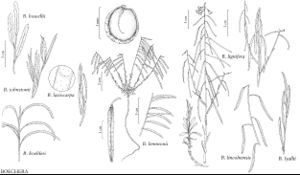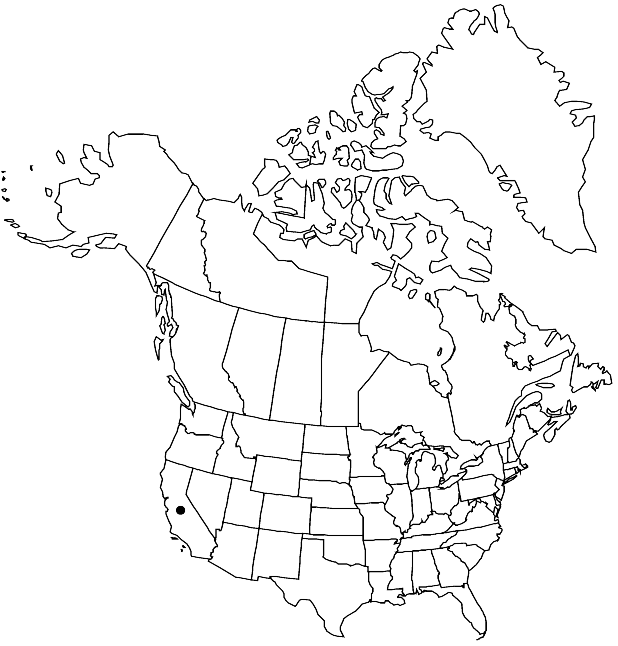Boechera johnstonii
Novon 13: 386. 2003.
Perennials; long-lived; (cespitose); sexual; caudex woody. Stems usually 1 per caudex branch, arising from center of rosette near ground surface, 0.5–2 dm, densely pubescent proximally, trichomes short-stalked, 4–10-rayed, 0.07–0.15 mm, sparsely to densely pubescent distally. Basal leaves: blade narrowly oblanceolate, 1.5–4 mm wide, margins entire, not ciliate, surfaces densely pubescent, trichomes short-stalked, 6–14-rayed, 0.07–0.15 mm. Cauline leaves: 4–10, often concealing stem proximally; blade auricles absent, surfaces of distalmost leaves densely pubescent. Racemes 10–18-flowered, unbranched. Fruiting pedicels divaricate-ascending, straight, 5–14 mm, pubescent, trichomes appressed, branched. Flowers ascending at anthesis; sepals pubescent; petals purple, 9–14 × 2–4 mm, glabrous; pollen ellipsoid. Fruits divaricate-ascending, not appressed to rachis, not secund, straight, edges parallel, 4–6 cm × 2.5–4 mm; valves glabrous; ovules 26–34 per ovary; style (0.7–) 1–2 mm. Seeds uniseriate, 1.9–2.7 × 1.5–2.2 mm; wing continuous, 0.3–0.7 mm wide.
Phenology: Flowering Feb–Mar.
Habitat: Rocky areas and gravelly soil in chaparral and oak-pine savannas
Elevation: 1300-1700 m
Discussion
Of conservation concern.
Boechera johnstonii and B. hirshbergiae are too similar to be considered distinct species. Even with the expanded circumscription, this distinctive sexual species is known only from the area of Cuyamaca Lake (San Diego County) and the San Jacinto Mountains (Riverside County).
Selected References
None.
Lower Taxa
"elongated" is not a number."thick" is not a number."dm" is not declared as a valid unit of measurement for this property.

